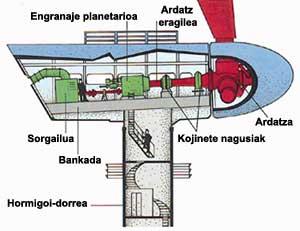The future of energy in Europe
Use of higher performance fuels
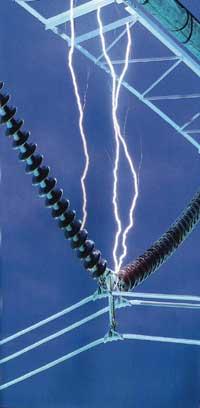
In Europe most of the energy is used to obtain electricity. Therefore, the transformation performance of fuel energy into electric energy is very important. The performance of the steam cycle in most plants is 40%. It is possible to increase this number by up to 55% by integrating systems that take advantage of residual heat in the technological process.
Fuel cells are another way to generate electricity. They resemble batteries, but they work with fuels that produce electricity in the cell itself by oxidizing hydrogen, methane or other fuel. They are not yet widely used for cost and durability problems, but considering their high performance (65%) and low pollution, the doors will open in the future.
In northern Europe, heating consumes a lot of energy. Although in recent years a good level of energy saving has been achieved, it is still possible to improve this level by triple glazing of windows and the use of solar energy for heating.

The heat pump is a very appropriate element for heat generation. The air at a temperature of 5°C or 19°C by the heat pump flows at 55°C or 60°C. Since the energy supplied to the heat pump in this transformation is 20% to 50% of the thermal energy provided by it, the performance ranges from 200% to 500%. Thermal energy can be extracted from soil, air or any low-temperature source. However, in order to improve performance, warmer sources such as sewers and waste heat from industrial processes can be used.
Electricity can be generated along with useful heat. In Germany, for example, systems that produce electricity and steam at temperatures above 100 °C are conventional. In Denmark 20% of hot water and domestic heating is obtained by this method.
Better combustion of coal
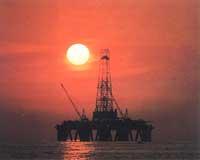
Europe has a lot of coal in the underground, but its use generates many problems. Coal-fired boilers for steam generation in power plants have a burning gas washing system. This system separates volatile dust from solid ash. But from the flames (at 1500°C) harmful gases such as sulfur oxides, nitrogen oxides and soot are released. Numerous studies have been carried out to prevent the emission into the atmosphere of these pollutants. The necessary facilities are large and expensive. In addition, because the materials extracted contain heavy metals and other dangerous substances, other problems are generated for their disposal.



Fluid-bottom boilers (i.e. those that burn fuel particles and other materials in drafts) can present a solution to the problem mentioned. In them the air currents float mixing coal dust and sand as if it were a sandstorm. The fluid bottom works at a temperature of 850ºC, which reduces the emission of pollutants into the atmosphere.
However, this technique is in the experimental phase and will still require more time and research to be able to access the normal commercial route.
Biomass
In the 1970s, biomass energy became fashionable in Europe. Biomass is made up of energy plants and biological sands. Much research has been done on straw, wood and organic waste and although in some cases it has been considered that agricultural and forest waste could be a substitute for fossil fuels, it must be borne in mind that the European potential of biomass at this time is only 5% of energy needs.
Most biomass in Europe is of agricultural or forestry origin. Therefore, any hypothesis on biomass should take into account the agrarian policy of the European Economic Community. The economic cost of biomass is for the collection and transport of the material. Therefore, depending on where and how the material is located, the economic cost may be higher or lower. The environmental condition may be high or low. For example, boilers using straw and wood across Europe have become conventional, but the air pollution they generate is unacceptable.
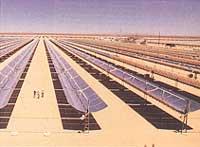
Biomass, methane, is produced by the fermentation of bacteria in animal waste. Biogas is the cleanest use of biomass ever known. Methane can be used to heat the house or at the same time to generate heat and electricity.
Solar energy
There are important programs for obtaining electricity or heat throughout the earth from solar energy. The energy per square meter and year that can supply a solar collector located in Denmark, in high latitude, with a slope of 45º is 1,200 kWh, and the energy that can be used of this energy is at most half. 70% of the 3,500 solar heating systems already installed in Denmark generate sanitary hot water and the rest generate hot water and electricity. The technology is already developed, but the cost is too high.

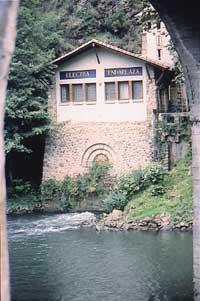
However, in buildings with good insulation and solar heating, half of the heating energy is required than in conventional ones.
In photovoltaic solar cells, solar radiant energy is transformed into direct current electricity. Both direct rays of the sun and diffuse light of the atmosphere are valid in this process. Because there is no movement, the cells have a long duration. The only problem is that a large area is needed to get electricity.
Geothermal energy
Geothermal energy is to take advantage of the heat inside the soil.
In the 1975-1985 decade, electricity production based on geothermal resources grew by 10% each year and in 1985 reached 4,800 MW. The geothermal power used that same year for heating, agriculture, etc. was 7,100 MW.
However, geothermal energy is exploited in very few places. The entire power generation of geothermal power in the European Community (460 MW) is in Italy. The alternatives offered by this road in 2000 will be 1,500 MW (electric) and 7,000 MW (for heating), which represents 1% of the European Community's energy consumption during that year.
This type of energy has significant economic costs. Drilling costs can be high, but the corrosion capacity of geothermal waters entails higher costs, as distribution systems and power centers require the use of special material.
Technological research in this field can have remarkable advantages. It is precisely in the UK that heat recovery systems are being studied from hot dry rock and the future of geothermal energy will be determined based on the success of these research.
Windmills
In the mid-seventies began the modern development of windmills, especially for the production of electricity.

The development of windmills has been carried out in two ways. On the one hand, small installations have been installed around megawatts. Denmark is the country where this technology has been most developed in Europe. There are currently 15 large systems and 2,000 small ones in operation. From a technological point of view, perverse steps were taken over the past decade, such as improving designs and reducing the cost of turbines.
At this time, the goal is for wind energy to reach the commercial level of other types of energy, which implies improvements in materials manufacturing and aerodynamics.
Final observations
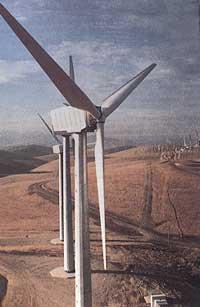
Most of the energy consumed in Europe is mainly based on oil, coal and nuclear fuels. Among renewable energies, hydraulics are the most used so far. Given the theoretical capacity of other renewable energies, their economic exploitation is relatively far from these levels. Its development depends largely on demand, climate, topography, geology and hydrology.
The EVD forecasts for the year 2000 contemplate an energy consumption of 1.1 billion tons of oil equivalent. This energy need is expected to cover 5% with renewable energy. Although this amount seems small, remember that currently only 2% is satisfied.
If oil remains cheap, there is a risk of implementing renewable energy more slowly than expected. However, we have to think that betting on renewable energy is ahead of the immigrant. Therefore, investments made in this line have a future.
